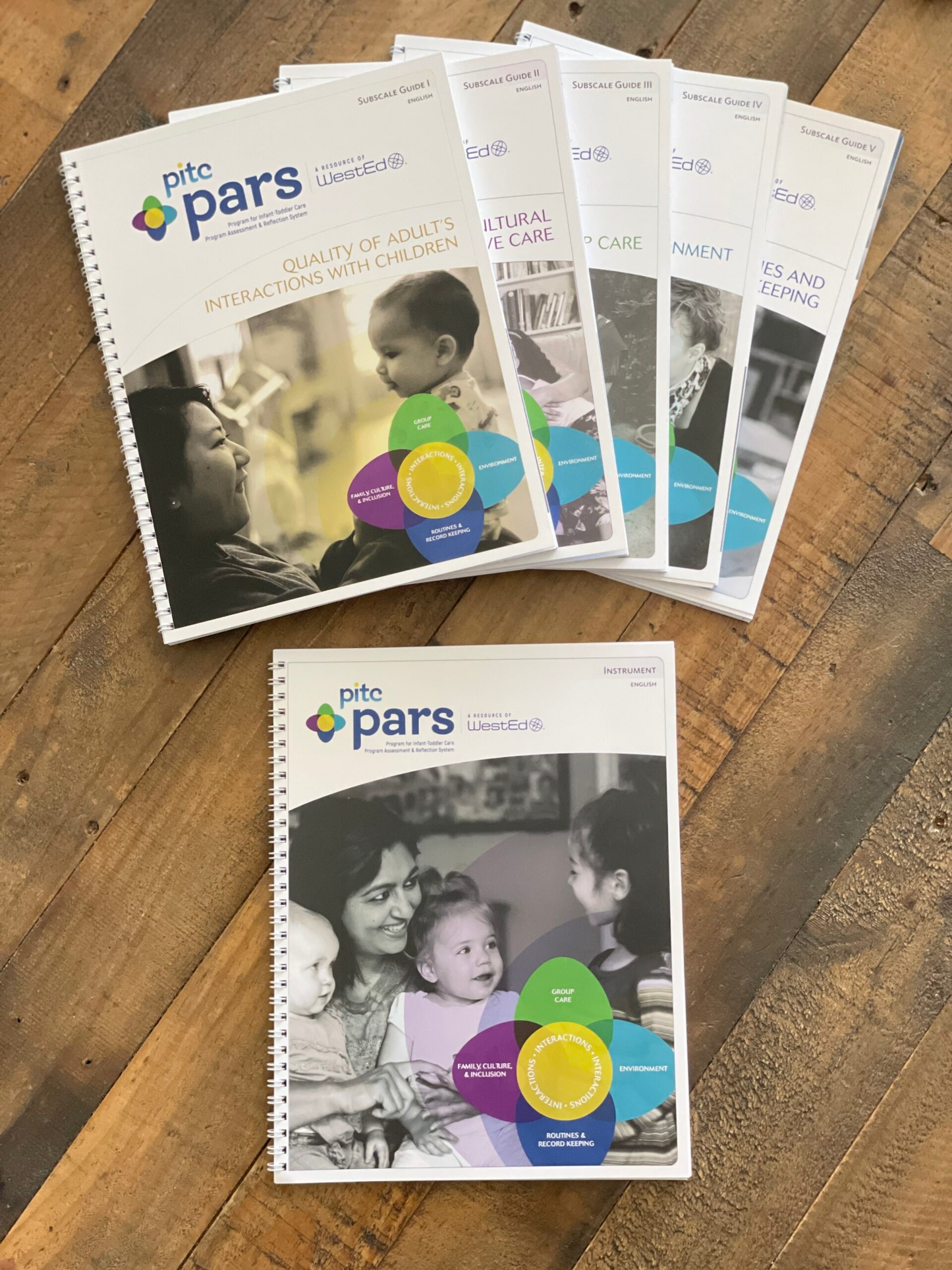WestEd
PITC PARS Instrument and Subscale Guides
PITC PARS Instrument and Subscale Guides
The PITC PARS is a tool used to observe essential components of infant/toddler group care—from caregiving interactions to the physical environment to program policies and administrative structures. The instrument enables observers to determine the extent to which family child care and center-based programs promote responsive, relationship-based care for infants and toddlers (ages 0–3).
The instrument is designed to recognize the multifaceted nature of quality for infant/toddler care programs. It includes five primary components of child care quality for infants and toddlers to provide a comprehensive look at program quality. These components, or subscales, each consist of various items and sub-items that allow for the assessment of key aspects of the program.
The Subscale Guides provide information about the intent of each sub-item, definitions of key terms, guidance for observing sub-items, and examples that demonstrate the sub-item in action. Together, these elements facilitate in-depth understanding for how to interpret each sub-item, which types of evidence to gather, and how to evaluate the evidence collected.
The PITC PARS Subscale Guides are learning resources for all PITC PARS users, including family child care providers, infant/toddler care teachers, program administrators, coaches, researchers, evaluators, and others.
Your purchase of PITC PARS will include a bundle of the instrument and the following subscale guides:
Subscale I. Quality of Adult’s Interactions with Children is about the responsiveness of individual teachers’ interactions with the infants and toddlers in their care.
Subscale II. Family Partnerships, Cultural Responsiveness, and Inclusive Care is about the extent to which caregiving practices, the care environment, and program policies are responsive to cultural and family practices as well as the unique needs of infants and toddlers.
Subscale III. Organization of Group Care is about the extent to which caregiving practices and program procedures meet infants’ and toddlers’ individual needs through predictable and supportive relationships with one or two care teachers.
Subscale IV. Physical Environment is about the extent to which the program provides indoor and outdoor environments that support infants’ and toddlers’ developmental interests and needs.
Subscale V. Routines and Record Keeping is about the extent to which caregiving routines and program procedures promote infants’ and toddlers’ safety and health.
To order with a purchase order or to purchase individual subscale guides or instruments, email customerservice@WestEd.org.
Author(s): Kerry L. Kriener-Althen, Gabriel S. Lopez, Peter L. Mangione, Bianca Reyes-Rodriguez, and Emily K. Newton
ISBN: PITC-23-42
Copyright: 2024
Format: Curriculum
Pages:
Publisher: WestEd
Couldn't load pickup availability
Share

